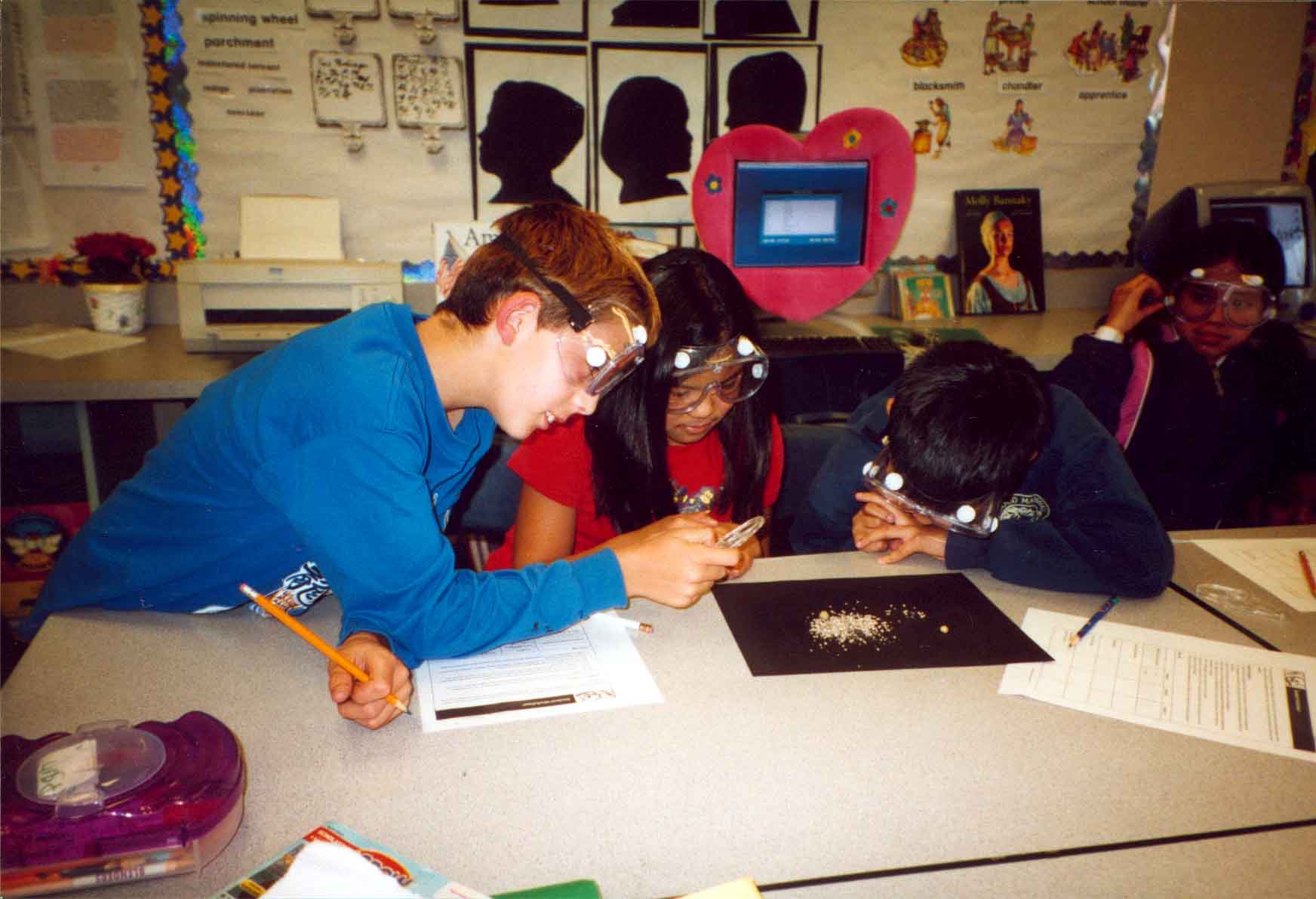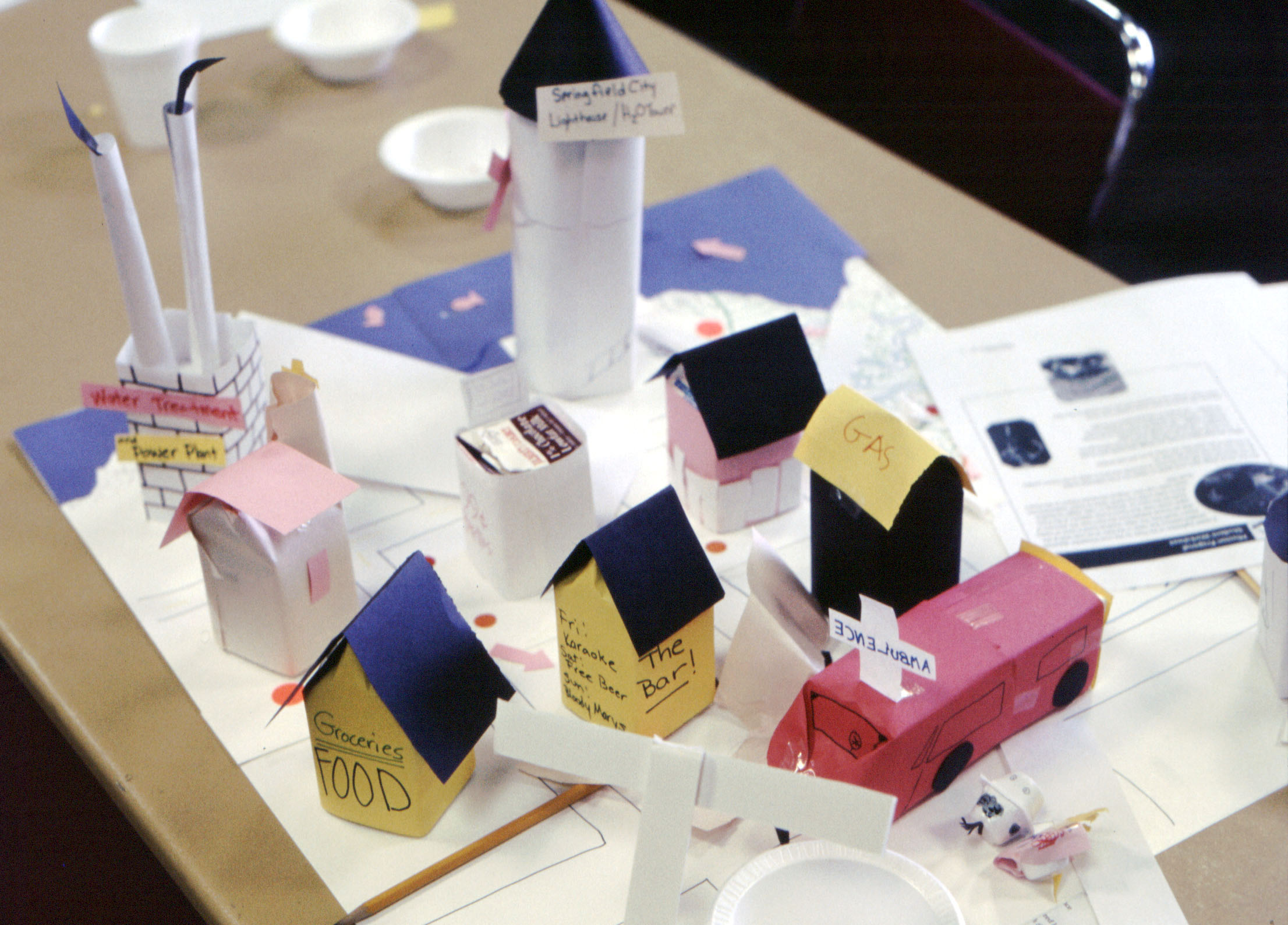
A class laying out a one to 10-billion scale model of the Solar System, as part of the Voyage of Discovery lesson found in the Voyage Module's Grade 5-8 Unit. Click on Image for Details
Grade K-12 Education Modules
The Center’s programs are supported by a curriculum library of Grade K-12 Education Modules—each Module a compendia of inquiry-based, hands-on lessons at elementary, middle, and high school levels.
Five Modules are currently available covering topics such as exploration of the Solar System, galaxy, and Universe; Earth systems science; the search for extraterrestrial life; building a permanent human presence in space; and engineering interplanetary spacecraft.
Each Module includes an Education Unit at three (K-4, 5-8, 9-12) or four (K-2, 3-4, 5-8, 9-12) grade levels. Each Unit contains lessons comprised of content overviews, pre-knowledge assessment, inquiry-based hands-on activities, assessment rubrics, resource listings, student worksheet masters, and answer keys. Typically each Unit also contains a lesson to be done with family at home, and a lesson specifically dedicated to the process of science.
Each lesson is developed from the National Science Education Standards with a focus on a specific standard. Two Modules (Voyage and Staying Cool) also address AAAS Benchmarks for Science Literacy.

Students in a 5th grade class in San Diego, CA, conduct the Searching for Signs of Life activity found in the Voyage Module's Grade 5-8 Unit. Click on Image for Details
Lessons are designed to develop conceptual understanding through activities that seamlessly integrate content and process. Lessons are instructionally designed to support facilitation of inquiry-based learning.
Download an overview of the Lesson Layout, including a description of each of the sections contained in a lesson and the section objectives: Lesson Layout (PDF, 490 KB
Education Modules Currently Available
• Voyage–A Journey Through the Solar System uses the remarkable power of models to provide an understanding of Earth’s place in the Solar System and the Sun’s place among the stars. The Module was created as part of the Voyage National Program which includes permanent placement of a one to 10-billion scale model of the Solar System on the National Mall in Washington, DC, and at sites across the nation. The Voyage National Program website includes a comprehensive look at the power of models in science education, and their use in the Voyage Module.
The Voyage Module’s grade 5-8 lessons are comprehensive enough to be adopted by school districts as the space science curriculum. The lessons are also meant to work in concert with a trip to a Voyage exhibition, serving as pre- and post-visit activities.[Included grade level Units: K-2, 3-4, 5-8, 9-12]
• Earth Systems Science focuses on the interactions of Earth’s four systems: biosphere, atmosphere, hydrosphere, and geosphere. Lessons are designed to demonstrate that observed phenomena on Earth are not unique to a particular system but arise from a systems interaction. [Included grade level Units: K-4, 5-8, 9-12]
• Staying Cool explores the extreme environment of space, the challenges of operating a spacecraft in such an environment, and the engineering solutions that enable the human race to send spacecraft to study other worlds. Staying Cool was developed in support of NASA’s MESSENGER spacecraft mission to Mercury, and in collaboration with the Carnegie Institution of Washington and Project 2061 of the American Association for the Advancement of Science. [Included grade level Units: PreK-1, 2-4, 5-8, 9-12]
• Building a Permanent Human Presence in Space explores the nature of the space environment and the challenges it imposes for life; why we would want to put humans in space; and how we would construct a permanent space habitat. [Included grade level Units: K-4, 5-8, 9-12]
• Are There Other Neighborhoods Like Our Own? Searching for Abodes of Life in the Universe explores the essential requirements for life in ‘our neighborhood’, and uses this case study as a means of searching for other abodes of life. [Grades K-4: Earth-Moon system; Grades 5-8: Solar System; Grades 9-12 Universe]


